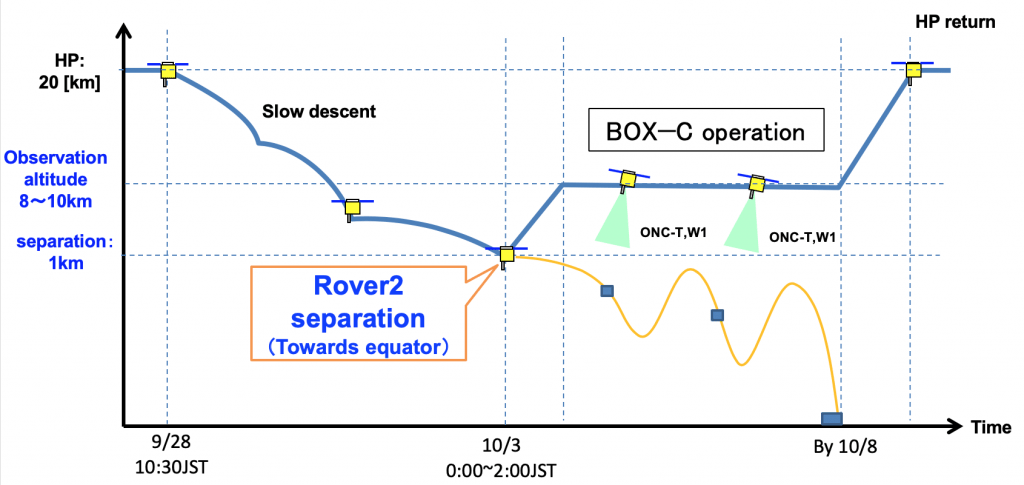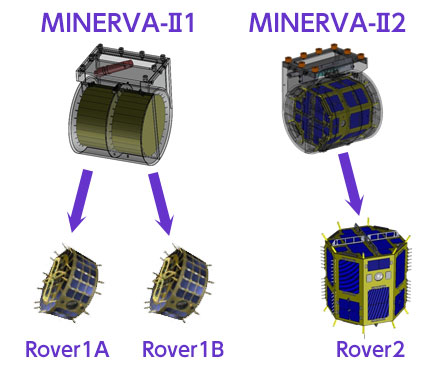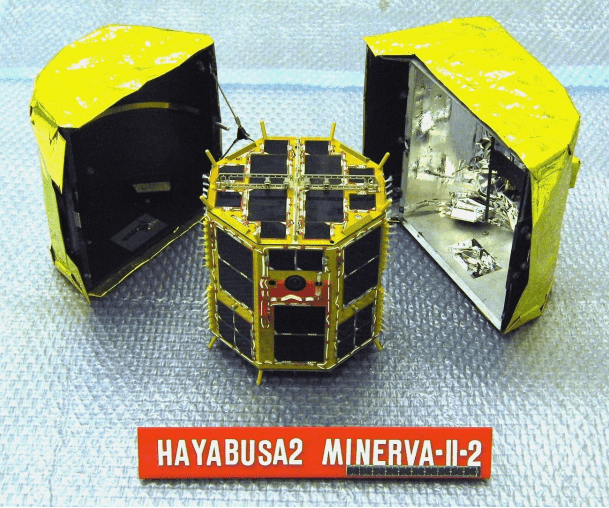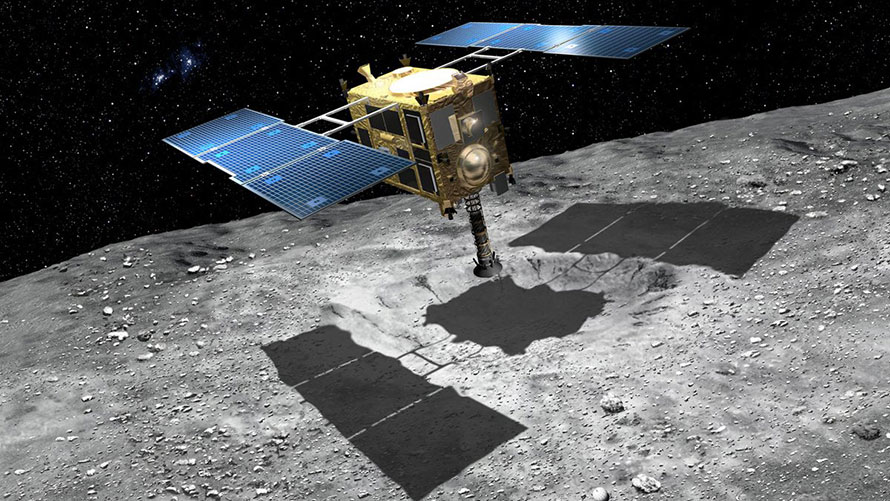Japan’s Hayabusa 2 mission to asteroid Ryugu has reached one of its final milestones, if not its climax. The sample-return spacecraft has launched the Minerva-II2 rover at the asteroid. This is the last of four rovers that Hayabusa 2 is deploying on Ryugu.
Minerva-II2 is actually two components in one, and the launch procedure has distinct phases.
Minerva-II2 is an octagonal-prism shaped container that holds the actual rover, named Rover 2. The container only weights about 1 kg (2.2 lbs) and carries an accelerometer, a thermometer, and dual cameras. It also has both optical and ultraviolet LEDs.
Hayabusa 2 launched Minerva-II2 on September 28th from an altitude of about 20km, and the container descended slowly. At 1 km altitude, Rover 2 separated from the Minerva-II2 container. At that point, Rover 2 continued on its way to Ryugu’s surface, while Hayabusa 2 followed it part way. Hayabusa 2 is now climbing to an observing height of about 10 km to watch Rover 2’s descent.
By October 8th, Rover 2 should land.

Rover 2 is slightly different from the other rovers on Hayabusa 2. It was developed by a consortium of Japanese universities. It’s different from Minerva-II1 because its primary goal was to confirm navigation around a low-mass, low-gravity body like Ryugu. That’s why it was deployed from a much higher altitude then Minerva-II1, (1 km vs 50 meters) and that ‘s why Hayabusa is watching its long, slow descent from about 10 km (6.2 miles) away.

The rover itself, Rover 2, was added as an ‘outreach payload’ for Japanese Universities, according to JAXA. But there might be a problem.
According to JAXA, Rover 2’s CPU might be experiencing problems, and may not be able to communicate data back to Hayabusa 2 from the surface of Ryugu. JAXA is deploying it anyway, since its descent to Ryugu is a significant part of its mission.

JAXA tweeted a picture of Minerva-II2 after separation. They also tweeted a photo of the team at mission control celebrating the moment.
Now it’s a waiting game. By October 8th we should know if Rover 2 landed successfully, and if it’s transmitting data properly. If it is, it’s another achievement in this important mission to understand ancient asteroids and what they can teach us about planet formation in the early Solar System.
The big prize is the asteroid samples, though. Hayabusa 2 is primarily a sample-return mission. Those samples have been collected, both surface and sub-surface, and they’ll be returned to Earth in December 2020.
More:
- JAXA Press Release: MINERVA-II2 (Rover2) separation operation
- JAXA: Asteroid explorer, Hayabusa2, reporter briefing
- Universe Today: Hayabusa 2 is the First Spacecraft to Sample the Inside of an Asteroid
- Universe Today: Hayabusa 2 has one Last Lander it’s Going to Throw at Ryugu

